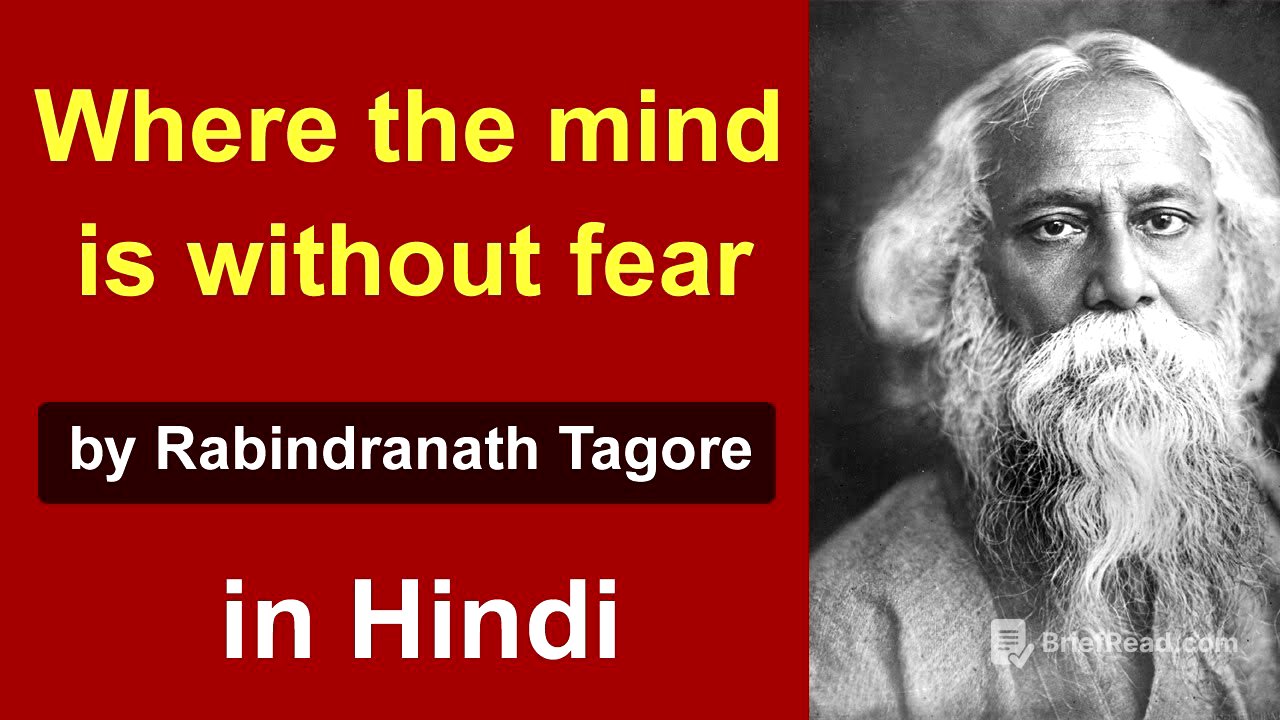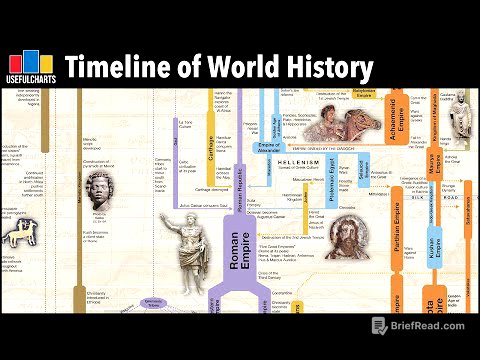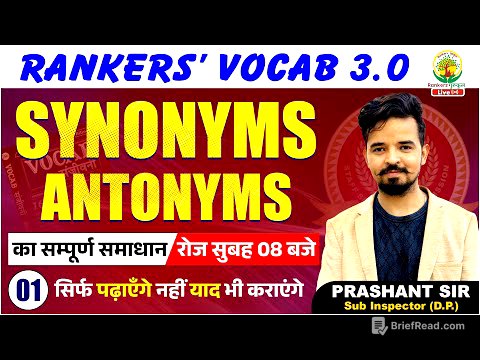TLDR;
Alright, so this video is all about explaining Rabindranath Tagore's famous poem "Where the Mind Is Without Fear." The poet talks about his vision for a free India where people aren't afraid, have access to education, and aren't divided by things like caste or religion. Tagore wants everyone to think big and work hard to make the country great.
- Tagore wrote the poem envisioning a free and unified India.
- The poem emphasizes the importance of education, truth, and logical thinking.
- It encourages people to rise above narrow-mindedness and work towards progress.
Introduction to the Poem [0:00]
The video starts off by introducing Rabindranath Tagore's poem "Where the Mind Is Without Fear," also known as "My Heaven." It was initially published in Bengali in 1910 and then translated into English by Tagore himself in 1912. The speaker points out that even Barack Obama quoted lines from this poem during his visit to the Indian Parliament, highlighting its significance.
Background and Context [0:54]
Back in 1910, India was under British rule, and people were living in oppression. Tagore wrote this poem as a prayer for India's future, dreaming of a nation where people could live with dignity, free from divisions based on caste, religion, colour, or language. He wanted a unified Indian identity.
Connection to Gitanjali [1:30]
"Where the Mind Is Without Fear" is part of Tagore's renowned collection of poems called Gitanjali. Specifically, it's the 35th poem in the collection, which is why it's sometimes referred to as Gitanjali 35. In Bengali, the poem is called "Chitto Jetha Bhoyshunno."
About Rabindranath Tagore [2:12]
Tagore was born on May 7, 1861, in Calcutta (now Kolkata). He received the Nobel Prize in Literature in 1913, making him the first non-European to achieve this honour. Tagore greatly contributed to the development of Bengali literature and is often called the "Bard of Bengal." He wrote India's national anthem, "Jana Gana Mana," and also penned Bangladesh's national anthem, "Amar Sonar Bangla." Interestingly, Sri Lanka's national anthem was inspired by Tagore's work.
Poem Explanation: Stanza 1 [3:47]
The poem starts with the line "Where the mind is without fear and the head is held high." Tagore envisions an India where every Indian can live with pride and without fear, unlike during British rule. People should be able to live freely and with dignity. "Where knowledge is free" means everyone should have the right to education.
Poem Explanation: Stanza 2 [4:35]
"Where the world has not been broken up into fragments by narrow domestic walls" refers to a unified India, not divided by caste, religion, or language. Tagore dreams of a country where there's no discrimination and everyone is treated equally. "Where words come out from the depth of truth" means that in this free India, people will be truthful and honest.
Poem Explanation: Stanza 3 [5:43]
"Where tireless striving stretches its arms towards perfection" signifies that everyone in this independent India will work hard to make the country better. Each person's contribution will help the nation develop. "Where the clear stream of reason has not lost its way into the dreary desert sand of dead habit" means people will use their minds for logical thinking and productive activities.
Poem Explanation: Stanza 4 [7:18]
"Where the mind is led forward by thee into ever-widening thought and action" suggests that people will have broad-minded thinking, rising above narrow-mindedness related to caste and religion. As their thinking expands, their actions will also become grander.
Poem Explanation: Stanza 5 [8:04]
"Into that heaven of freedom, my Father, let my country awake" is a prayer to God (referred to as "Father") for the people of India to awaken to this feeling of freedom. Tagore hopes that everyone in India experiences true liberation.









